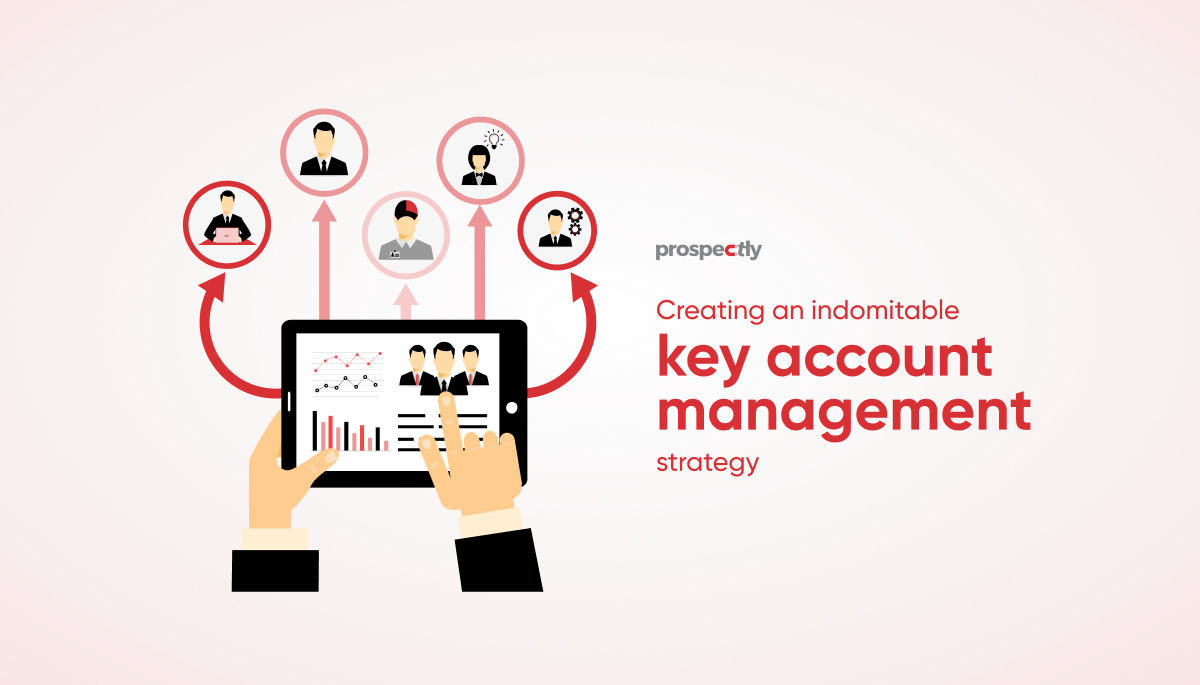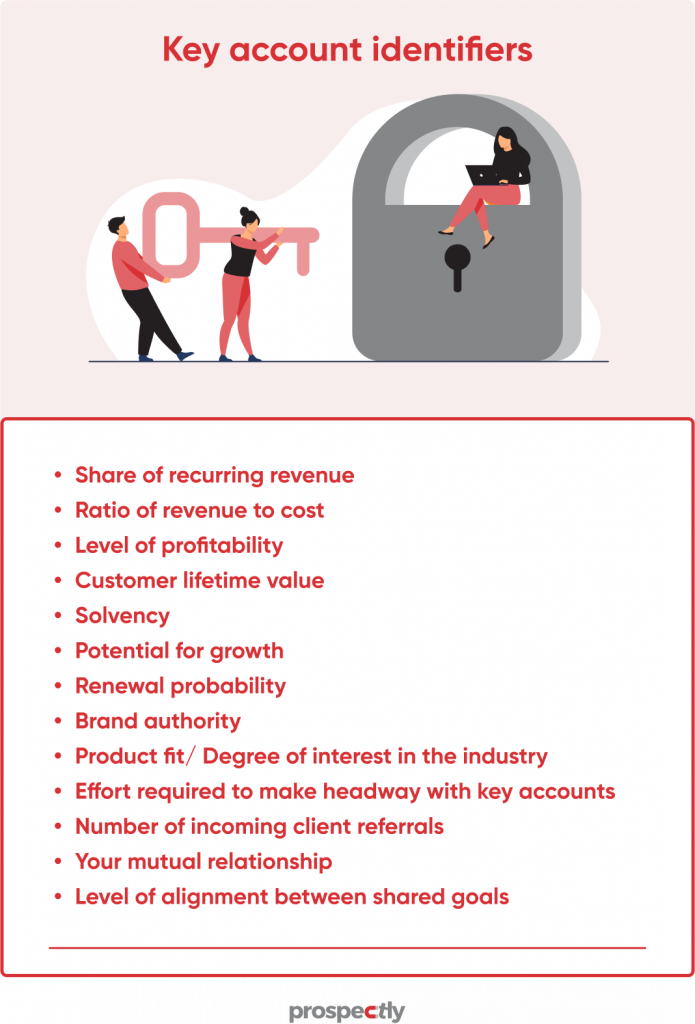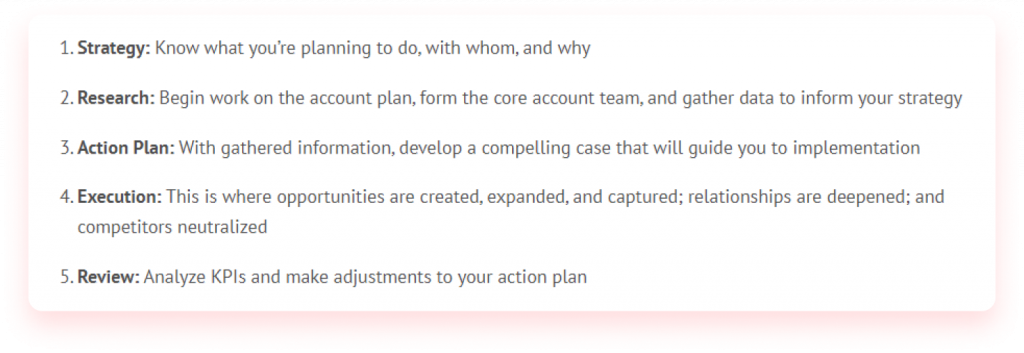Creating an indomitable key account management strategy

A systemized client management process is essential for running a B2B business. The 80/20 rule, when applied to sales, indicates that 80% of your profits come from 20% of your customers. It is your job to nurture that 20%, so the wheels keep turning. This is where key account management comes in. This blog will highlight how you can maximize your sales while augmenting client loyalty by focusing on key account management strategies.
What is B2B key account management?
Key account management (KAM) or strategic account management is identifying, farming, and mining your key accounts to build mutually beneficial relationships. It necessitates sacrificing short-term gains for broader goals like collaboration and client support. Focusing on KAM is especially important for B2B businesses that offer numerous solutions and require long-term client engagement.
Key account management strategies differ based on your industry and your key account. You need to be cognizant of the resource allocation while managing these accounts. While automated processes might work for 80% of your existing clients, the remaining 20% that comprise the bulk of your revenue need special care and attention. You need to master strategic planning and cross-functional leadership to sustain mutually beneficial relationships with your high-value clients.
While understanding key account management, it is important not to blur the boundaries between key account management and selling. Here are some principle differences between these two roles.

According to Gartner, key accounts are responsible for 33% of your sales revenue. But how do you identify these exclusive clients? Let’s find out!
How do you identify key accounts?
Your key accounts are the clients who make up the maximum share of your revenue or those with potential for it. According to RAIN Group, they fall into two categories –
i) existing key accounts that are already large enough and hence necessary to nurture and retain, and
ii) emerging key accounts that have the potential to grow into a marquee client.
However, the value they bring in can be subjective, based on your business model. It is essential to be stringent with the rules that determine your key accounts, as it’s easier to add more clients later to your KAM list than to demote them. Harvard Business Review suggests somewhere between 5 and 25 accounts as the ideal number. Here are certain factors to consider while identifying key accounts.

What is the role of a key account manager?

If you are a key account manager, you need solid collaboration skills to understand your client’s business requirements, pain points, and future aspirations. With this knowledge and frequent client catchups, you can provide them with customized solutions, resources, and new offers. As illustrated above, in key account management, you establish yourself as a Partner while your competition is perceived as a Supplier, Friendly face, or an Outsider.
Moreover, to grow your key accounts, you also require the unwavering grit to consistently execute solutions that meet their needs. You achieve this by taking on a facilitative role wherein you become the mediator between two organizations and your client’s focal point of contact. Contrary to an account manager, a key account manager is responsible for managing the client and their interaction with the other departments to ensure a greater lifetime value for the key accounts.
Key account management process
For your account management plan to work, it is essential to follow a systematic process/template with proven results. According to RAIN Group, 45% of top-performing salespeople have at least a defined account management plan compared to 25% of the rest. It also advocates for 5 stage account management process, as illustrated below.

For potential key accounts, RAIN Group encourages salespeople to drill down further into each category. However, following this template should suffice if you have accounts with good relationships.
Below is a breakdown of this key account management process.

What are the benefits of key account management?

Building customer loyalty
A KAM strategy organically guarantees special attention to your key accounts. Your clients get a dedicated liaison who provides regular updates on offers, new product launches, or policy changes. It creates a personalized experience for your clients, builds trust, and increases your market credibility.
Boosting revenue
Increased client loyalty results in more repeat business through up-selling and cross-selling, which increases your income. Trusted clients also provide better and higher referrals, increasing your chances of market penetration.
Creating synergetic relationships
The ultimate goal of key account management is growth for both parties involved. By consistently seeking opportunities to solve pertinent client issues through personalized solutions, you create growth opportunities for your customers. You also raise your profits by offering newer products/ services to address their concerns. This creates a win-win situation for the supplier as well as the customer.
Outpacing competition
By allocating dedicated and maximum resources to your key accounts, you can focus on client fulfillment and increase customer satisfaction. Content clients are less likely to be persuaded by your competitors. This helps you gain market monopoly and strategic advantage over your competition.
Now let’s look at some tried and true tips for creating your key account management strategy.
Best practices in key account management

Know your key accounts
Keeping a pulse on your clients will help you secure the role of their confidant. Know what their objectives are, what they expect from you and how they define exceptional customer service. Follow industry trends and analyze how you can help them grow. The best option is always to hear from the horse’s mouth by getting regular feedback through client meetings, pulse surveys, etc.
Create an action plan
As with any business objective, successful client management also requires a carefully formulated step-by-step approach. Once you fully understand their goals and pain points, develop a roadmap to help them achieve their goals.
Review and reassess
It is crucial to review the performance of your key accounts periodically for maximum success. You can conduct these assessments weekly, monthly, or quarterly based on your goals and industry. Schedule regular client meetings for feedback on the support level, new business requirements, areas of improvement, etc.
Build utility
Make sure your alliance offers significant and quantifiable benefits to your key customers. To sustain prolonged mutually beneficial relationships, you need to demonstrate compelling value like cost reduction, increased profits, higher ROI, etc.
Hone your relationship-building skills
If you manage key accounts, be prepared to invest the required time and energy to earn their trust. Give them your undivided attention and make them feel heard and valued. While addressing sensitive client requirements, consider your end goal and your key account’s value by reviewing historical data and analyzing growth potential.
Seek out growth opportunities
Similar to scouting new targets, leveraging your key accounts also requires you to hunt for fresh business opportunities constantly. You need to know the ins and outs of your client’s industry, their business, and a comprehensive understanding of your offerings. Detailed research and regular client check-ins should help you gather the intel required to spot these opportunities.
Learn to anticipate client requirements
Instead of waiting for your customers to reach out to you, be proactive enough to anticipate their needs and come up with the right solution. Once again, client research and recurring meetings will help you get a read of your customers. Also, keep them informed about internal changes like new solutions, offers, and restructuring, which may impact their business.
Be an effective mediator
As a key account manager, your job is to act as a liaison between your client and the concerned departments within your organization. Become their trusted partner by going above and beyond to communicate their needs. By delivering swift and effective service to your key accounts, you can gain their trust for repeat business.
Set the right expectations
Develop a habit of diligent follow-through when delivering on promises like meeting a deadline, offering discounts, or entertaining special allowances. It’s best not to make promises you can’t keep and be coherent about setting expectations.
Have multiple touchpoints in your key accounts
Increase the number of touchpoints or influencers within each key account, reach out to as many of them as possible, and create a map of these contacts within the company hierarchy. Engaging and developing relationships with each of them will help you strengthen your overall business strategy.
Personalize your approach
If you are a seasoned sales professional, you will realize that not every customer is the same. After interacting with all your liaisons inside the client company, get an idea of their exact requirement. Then brainstorm ways to offer customized solutions that serve their final goal. This will result in greater client satisfaction and long-term relationships.
Focus on building a winning KAM team
It is good practice for the key account manager/KAM team not to be involved in generating new business. This ensures you invest dedicated time and resources into your key accounts. Moreover, the role of a key account manager is multi-faceted, and hence your KAM team needs a diverse set of expertise. RAIN group suggests including the following positions in your KAM team to maximize its potential.

Conclusion
General perception may indicate that new business development is more challenging than generating revenue from existing accounts. By now you would have realized that it is definitely not the case.
Key account management requires undeterred focus, resilience, and the ability to give your client your absolute best. Maintaining client relationships is a highly critical and sensitive task. Having a plan, being proactive, and practicing the key strategies mentioned in this blog should bring you closer to your goal of delivering effortless key account management.




